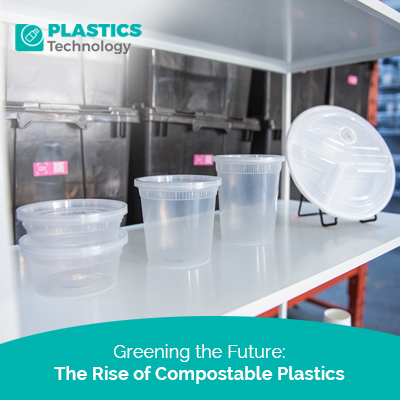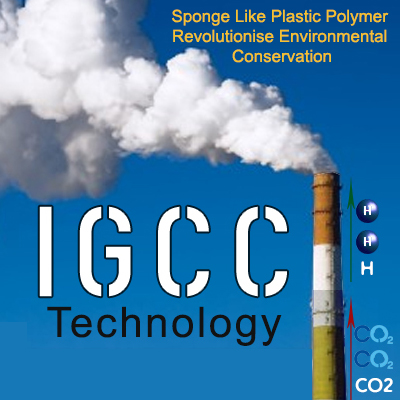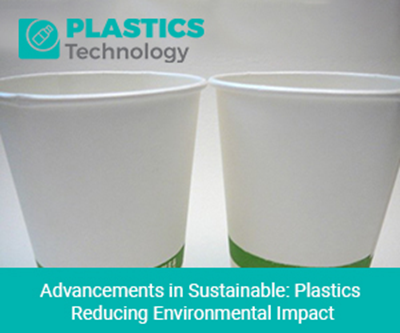Articles
Greening the Future: The Rise of Compostable Plastics

In recent years, there has been a growing emphasis on sustainability across various industries, including the plastics sector. As concerns about environmental impact continue to rise, compostable plastics have emerged as a promising alternative to traditional petroleum-based plastics. This article delves into the concept of compostable plastics, their benefits, challenges, applications, and the role they play in shaping a greener future.
A. Understanding Compostable Plastics
Compostable plastics, also known as biodegradable plastics, are a type of material that can undergo biological decomposition in a composting environment. Unlike traditional plastics, which can persist in the environment for hundreds of years, compostable plastics break down into natural elements such as carbon dioxide, water, and biomass when exposed to specific conditions.
The key distinction between compostable plastics and conventional plastics lies in their composition. Compostable plastics are typically made from renewable resources such as corn starch, sugarcane, or cellulose, making them more environmentally friendly. They are designed to mimic the functionality of traditional plastics while offering a sustainable end-of-life solution.
B. Benefits of Compostable Plastics
Reduced Environmental Impact: Compostable plastics help reduce the reliance on fossil fuels and mitigate the pollution associated with traditional plastics. Their ability to biodegrade into non-toxic components contributes to cleaner soil and water systems.
Waste Reduction: By promoting composting and waste diversion, compostable plastics support efforts to reduce landfill waste and promote a circular economy model. They can be integrated into existing composting infrastructure, minimizing disposal challenges.
Resource Conservation: The use of renewable resources in compostable plastics supports sustainable agriculture and reduces the depletion of non-renewable resources. This aligns with global efforts to achieve resource efficiency and conservation.
Consumer Preference: With increasing awareness of environmental issues, consumers are showing a preference for products and packaging made from compostable materials. Brands that adopt compostable plastics often attract environmentally conscious consumers and enhance their brand image.
C. Challenges and Considerations
While compostable plastics offer significant environmental benefits, several challenges and considerations need to be addressed:
Certification and Standards: Ensuring that compostable plastics meet recognized standards for compostability is crucial to avoid greenwashing and ensure proper degradation in composting facilities.
Infrastructure: The availability of composting facilities and infrastructure varies regionally. Expanding composting infrastructure and educating consumers about compostable plastics' proper disposal is essential for maximizing their environmental impact.
Performance and Durability: Compostable plastics must demonstrate comparable performance and durability to traditional plastics in various applications, such as packaging and food service, to gain widespread acceptance.
Cost Considerations: While prices are decreasing as technology advances, the initial cost of compostable plastics may still be higher than traditional plastics, posing a barrier to widespread adoption in some industries.
Consumer Education: Educating consumers about the proper disposal and composting of compostable plastics is necessary to prevent contamination of recycling streams and landfills.
D. Applications of Compostable Plastics
Compostable plastics find diverse applications across various industries:
Packaging: Compostable packaging materials, such as bags, containers, and films, are increasingly used in food packaging, retail products, and shipping.
Food Service: Compostable cutlery, plates, cups, and straws are popular alternatives in the food service industry, reducing plastic waste in restaurants and events.
Agriculture: Compostable mulch films and agricultural products contribute to sustainable farming practices, reducing plastic contamination in soil and water.
Medical and Healthcare: Some medical devices and packaging materials are transitioning to compostable alternatives, ensuring both safety and environmental responsibility.
Consumer Goods: Compostable materials are used in the production of disposable items like diapers, wipes, and hygiene products, offering eco-friendly choices to consumers.
E. Future Trends and Innovations
Looking ahead, several trends and innovations are shaping the future of compostable plastics:
Advanced Materials: Continued research and development are leading to the creation of compostable plastics with enhanced durability, performance, and versatility, expanding their applicability across industries.
Biopolymer Blends: Combining different biodegradable polymers and additives is improving the properties and compostability of plastics, offering customizable solutions for specific applications.
Smart Packaging: Integration of smart technologies, such as biodegradable sensors and indicators, into compostable packaging, enhances functionality while ensuring environmental compatibility.
Circular Economy Models: Collaborative efforts to establish closed-loop systems for compostable plastics, from production to disposal and composting, are gaining traction, promoting a more sustainable and efficient waste management approach.
Policy and Regulation: Continued regulatory support and incentives for compostable plastics, alongside stricter measures against single-use plastics, are driving market growth and innovation in sustainable packaging solutions.
Conclusion
Compostable plastics represent a significant step forward in addressing the environmental challenges posed by traditional plastics. Their biodegradability, resource efficiency, and potential for closing the loop in circular economies make them a valuable tool in greening our planet and promoting sustainable practices across industries. As technology advances, consumer awareness grows, and regulatory frameworks evolve, the future looks promising for compostable plastics as a key driver of environmental stewardship and responsible waste management.




